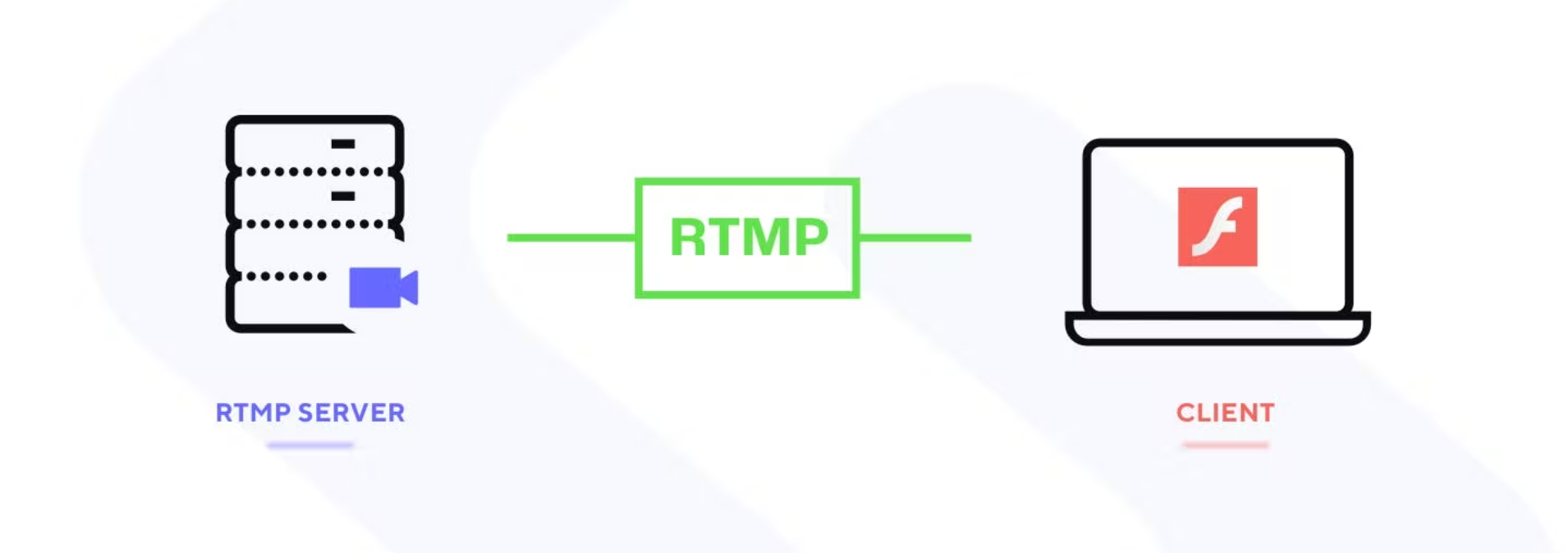Real-Time Messaging Protocol (RTMP) is a protocol that allows you to play videos over the Internet. You should check out the community forum if you have questions about RTMP or the video-related protocols. They are an excellent resource for people trying to understand these protocols.
RTMP
RTMP is a streaming protocol developed by the forerunners of Adobe and is now used by the Flash Player. It allows real-time data, audio, and video transfer over the Internet. RTMP is often used to deliver video because video data is enormous files, and the protocol chops it up into small packets so that it can be delivered to viewers in a streamlined way. Regarding how to play RTMP stream in browser, you need to consider that an RTMP stream can be easily added to an HTML5 video player. Hence, browsers frequently switch to HTML5 video players using RTMP.
RTMP is an open protocol that offers high-quality transmission but has some limitations. For example, it cannot be tuned to maintain a fixed latency and degrades when the connection is slow. However, RTMP has several advantages over other technologies. For example, it can support live camera feeds and is compatible with most live-streaming software. The downside of RTMP is that it is not scalable to large audiences and requires a high internet bandwidth.
Additionally, some browsers have started to refuse RTMP streams.
First, you’ll need a server with enough RAM and bandwidth. A mid-range PC can usually handle 20 streams. It would be best not to depend on your PC’s processor because the Internet connection speed will determine how fast the stream plays. Also, RTMP servers aren’t CPU-intensive so a single CPU core may be sufficient for a small project. However, a server that transcodes media can require more CPU. Then, configure Nginx to use RTMP. Nginx has a wiki page that has documentation on RTMP.
RTMP vs. Flash
RTMP is a semi-open specification that enables high-quality data transmission over the Internet. It is used to stream audio and video from a Flash media server. Flash players need to install a plug-in in their browsers to use RTMP.
Streams from RTMP servers can be sent to as many clients as required. You can chain several media servers for more significant events to handle the traffic.
RTMP is a TCP-based protocol developed by Macromedia Inc. (subsequently acquired by Adobe). RTMP is used for streaming video and audio and provides low-latency transmission. Streaming providers widely accept it. Its encoding allows it to be transmitted over HTTP and TLS/SSL-secured connections.
RTMP can reduce the latency of live events by reducing the number of fragments used. Each segment is typically 64 bytes for audio and 128 bytes for video. RTMP fragment sizes can be negotiated between the client and server, though small fragments can increase the CPU load.
RTMP also has several disadvantages. For example, RTMP does not support HEVC or advanced resolutions, unlike Flash. It also cannot be used at high bitrates because of bandwidth limitations.
Furthermore, it has historically been difficult to provision through firewalls.
Further, RTMP experiences problems related to security, multiple language support, and ad insertion.
RTMP vs. CMAF
When comparing RTMP and CMAF, it is essential to consider the benefits of each protocol. While both protocols offer advantages, they differ significantly in delivering content to users. One of the most significant advantages of CMAF is its lower latency, which typically ranges from two to five seconds. Another essential advantage of CMAF is that it uses standardized container files to reduce storage costs.
RTMP lacks a few features that make it less suitable for playback. For example, it does not support HEVC and VP9. It also only allows two audio tracks. In addition, it does not include timestamps in the packet headers. Lastly, RTMP requires labels to be generated evenly for the receiving component to decode. Because of these limitations, RTMP can be used for ingesting, but it should be avoided for playback.
However, CMAF is still developing. Although it has a long way to go before it impacts the consumer experience, it does have the potential to replace current cloud technology. For example, it has the potential to support live dreaming and sub-second video delivery. In addition, CMAF is standards-based and works on a wide range of devices.
RTMP aims to provide smooth and stable transmission of video data. It breaks a data stream into equal pieces and reassembles it at the receiving device. RTMP is most commonly used for first-mile contributions and video transfer from an encoder to a network video host. It is currently used by Facebook, YouTube, and most other platforms.



